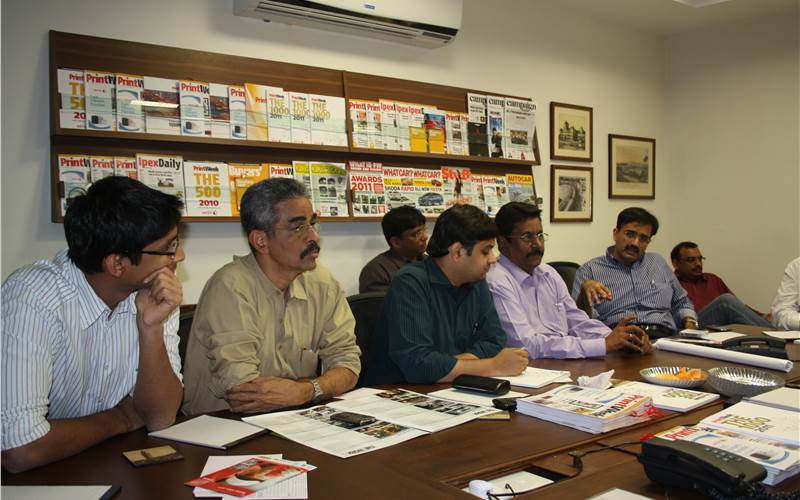Share-to-Benefit Forum prompts debate on need for standardisation
BMPA’s Share-to-Benefit Forum at its monthly meeting held last Wednesday at PrintWeek India’s Pipal conference room used the platform to unfold the importance of standardisation, the changes it can bring when implemented to the ultimately printed sheets.
18 Jan 2012 | By Rahul Kumar
Hemanshu Desai, managing director of Venus Infotech, presented information on standardisation process including colour processes to the gathering.
“Standardisation and managing colour from the design stage to the finished product has been in vogue for quite some time, but hasn’t penetrated the Indian print industry. As a result, quality of print has been at the receiving end,” said Fred Poonawala, managing director of Comart and a member of the StB, justifying the reason for deciding the topic on standardisation.
Standardisation is putting together a process that shows that printing is a system and that several raw materials must come together to create a successful job. Standardisation has not been a favourite of many printers in India. But investing in colour management is worth paying for, because when it comes to printing, the issue has always been the end results, which does not match from the early proofing or pre-press stage.
There are few who adopt their own test procedures to run their jobs, which is quite different from others, which according to Desai is not the way to go. “Why don’t we have common, standardised tests?” asked Desai.
“Stardardisation makes the industry speak the same language, bring specific definitions which can be assigned to products, their properties, processes and identification of various material. It’s a way to improve functioning for better results. Importantly, it can save time and material for the printers as well as satisfy clients.”
Desai’s presentation highlighted different standards like FOGRA, GRACOL, IFRA and ICON. FOGRA for instant is from Europe, GRACOL from USA. Both the standards are for commercial printers. IFRA and ICON are for newspapers. IFRA is international and ICON is adopted by Indian newspapers.
Desai summed up his presentation by making a predication. “Two years from now there will be lot of work coming from the international market and if the Indian print industry has to take advantage of the same, they will have to be ready, speak a common global language, to gain acceptability.”
Our opinion: We need an organised effort to provide printers with better information and meaningful data about these standards.This may take some time, but in the end will it will ensure that the Indian printing firms reach an even higher level of quality.
Glimpses from the session













 See All
See All